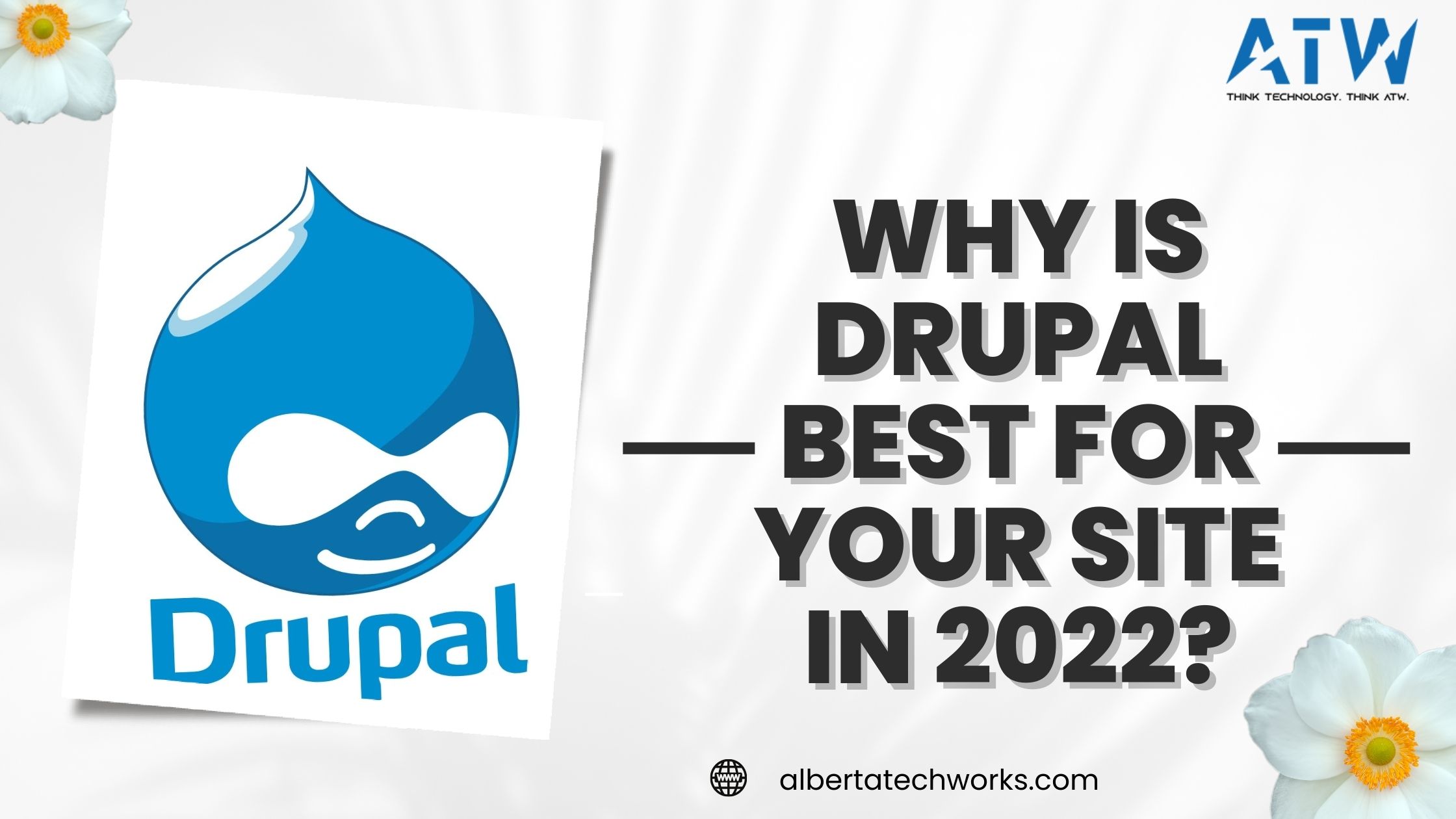Did you know?
Drupal is used by 2.4% of all websites worldwide. ~W3Techs
With the dynamic and versatile online ecosystem, enterprises look for a CMS that can adapt constantly evolving technologies. Moreover, consumers demand more interactive website layouts, personalized experiences, and enhanced network connectivity on multiple devices. To fulfill all the needs, enterprises and organizations need CMS to manage content in an organized way and to pace with ever-changing customer needs.
Drupal is one of the top CMSs for content-oriented content management solutions, which various companies have adopted – from startups and SMBs to large enterprises. Over the years, Drupal has evolved from a simple web development tool to a robust digital platform for enterprises globally.
With over 1.7 million websites, Drupal has been rapidly growing over the past decade, making it the best CMS for your website in 2022.
Also read: Challenges In Migrating From Drupal 7 To Drupal 9
Why Drupal is the Best CMS in 2022?
With over 1 million users all over the world, Drupal is an open-source CMS platform. All organizations (startups, SMBs, and large enterprises) can freely use flexible & robust Drupal without fearing vendor lock-in. Moreover, the cost of implementation is low due to the availability of free community codes.
If you’re still unsure why you should use Drupal for your website, let’s discuss the reasons in detail.
#1. Highly Secured Platform
Security has become the topmost concern for every website, and Drupal offers more protection than any other CMS available today. Security is the key selling point of Drupal, which is why it is highly preferred by government websites like the White House, Commodity Futures Trading Commission, and more. Drupal CMS ensures that your site is well-secured from any possible hack. Moreover, they regularly release security patches and updates to ensure optimal site security.
Also read: Should You Migrate From Drupal 7 To Drupal 9
#2. Extensible Via APIs
With Drupal CMS, you can integrate web services on your website via robust APIs. These APIs enhance customer experience on the website by providing better caching protocols and inducing faster page rendering.
Some of the APIs available for Drupal 8 and 9 are:
- The RESTful Web Services API supports a decoupled Drupal site. It also communicates between the Drupal website and native mobile iOS/Android apps; and integrates with web services.
- Render API enhances the user experience through faster page rendering and better-caching protocols.
- JSON: API module allows serialization and communication via JSON.
- Translation API can adjust the language on your website based on geographics.
The best thing about Drupal is that it offers extensive documentation and well-described APIs for its users, making it easier for users to integrate any API without facing any challenges.
#3. Personalized User Experience
Drupal 9 offers all the tools that can help create customer-centric experiences. These tools allow websites to meet the needs of their visitors, guiding them to make purchase decisions as soon as the webpage loads. The several built-in and contributed modules that amplify Drupal are:
- Personalization – It offers an experience to the user as per their preference via content personalization modules, such as Browsing History Recommender, Personalization Module, Context-Menu Block, and Commerce Recommender.
- Enhanced caching capabilities – BigPipe and other caching optimization modules improve the page loading efficiency of the website.
- Flexible layout tools for marketing campaigns – The Layout tool allows creating flexible landing pages and reusing content across various marketing campaigns. Another flexible module you can use is Gutenberg.
- WYSIWYG editor – This feature helps users determine how the content (text and images) will look on the live website.
- Social media modules – Social media integration modules allow users to connect with their customers via Facebook and Twitter media feeds as well as the website.
- Multilingual functionality – The Multilingual module translates the content into the language based on users’ geographic locations.
- Built-in block system – The built-in drag and drop blocks help rearrange the appearance of text and images on your website. Repeating the same block across multiple pages offers design uniformity and an opportunity to reuse content.
Also read: Guide To Migrate From Drupal 7 To Drupal 9
#4. Great For SEO
According to a 2017 Forrester report, semantic structure plays a crucial role in Search Engine Optimization.
- Metatag module in Drupal is an Auto-tagging tool, allowing you to add meta tags automatically on your website.
- Drupal also allows you to adjust how your content will appear on social media channels with Twitter Cards API for Twitter and Open Graph protocol API for Facebook. These APIs also offer an option to share consistent messages across multiple platforms.
- Drupal Pathauto module allows you to automatically generate URLs and path aliases for your content, offering a better click-through rate (CTR) and search engine rankings.
These APIs make Drupal one of the best CMSs from an SEO perspective.
Moreover, Drupal websites are flexible and have an intuitive taxonomy system. The in-built taxonomy system simplifies content structure based on keywords. You can easily organize content on the website based on the theme, viewing options, and navigate to search terms.
#5 Open Source Community
Like no other CMSs, Drupal is famous for its open-source community too. Being a large community of developers, you can get numerous plug-and-play-ready modules for free. It means you’ll be the owner of your development code and data.
Also read: How To Prepare A Drupal 7 Site For Drupal 9
#6. Improves Web Experience Management System
Unlike other CMSs, Drupal allows organizations and businesses to integrate third-party tools. The platform is flexible and intends to operate as a web experience management system for organizations and enterprises. Moreover, enterprises can incorporate CRM software and inbound marketing platforms into the website via a web experience management system.
You should also know that the latest version of Drupal, i.e., Drupal 9, is constantly innovating to be a leading platform in personalization, interactivity, security, and scalability. By choosing Drupal for your website, you’ll be integrating the latest technologies and functionalities on your website.
We hope these reasons are enough for you to switch your website to Drupal 9.
Need any help with Drupal 9 migration, do reach out to our Drupal experts at Alberta Tech Works!


